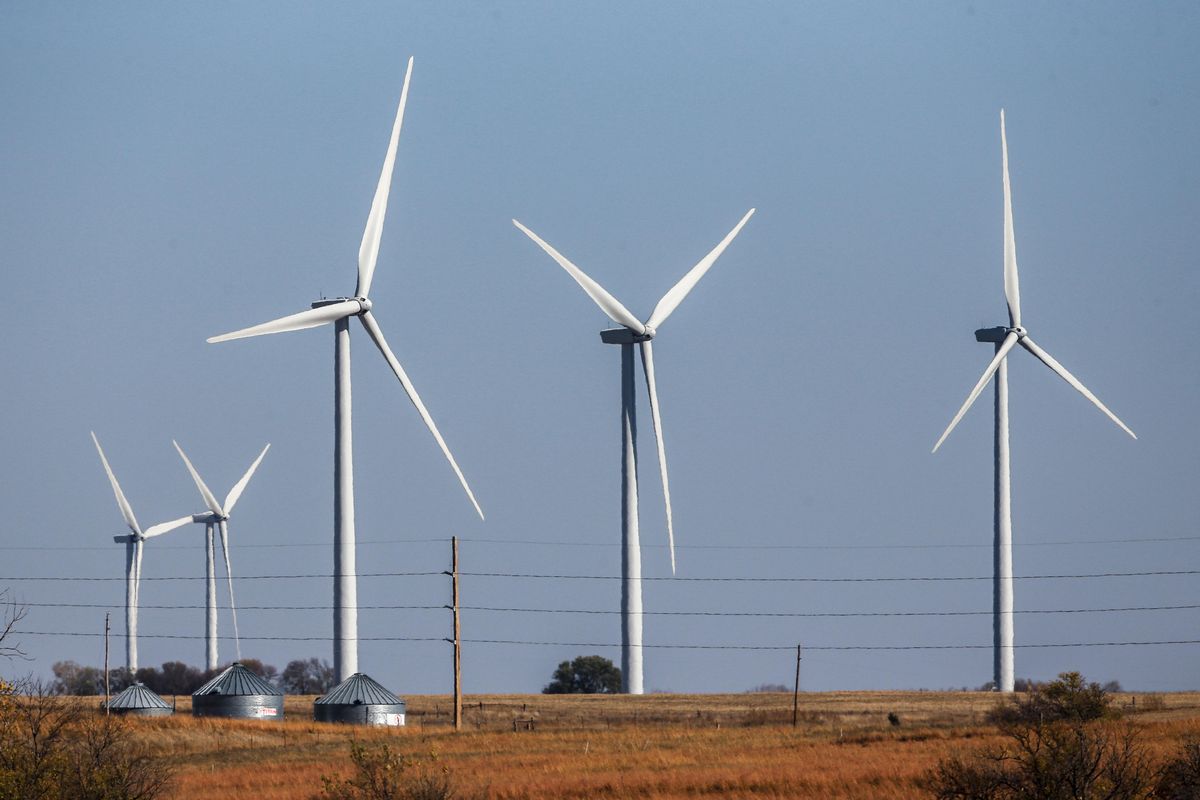GOP states benefiting from shift to wind and solar energy

WASHINGTON – If there’s a War on Coal, it’s increasingly clear which side is winning.
Wind turbines and solar panels accounted for more than two-thirds of all new electric generation capacity added to the nation’s grid in 2015, according to a recent analysis by the U.S. Department of Energy. The remaining third was largely new power plants fueled by natural gas, which has become cheap and plentiful as a result of hydraulic fracturing.
It was the second straight year U.S. investment in renewable energy projects has outpaced that of fossil fuels. Robust growth is once again predicted for this year.
And while Republican lawmakers in Washington have fought to protect coal-fired power plants, opposing President Barack Obama’s efforts to curtail climate-warming carbon emissions, data show their home states are often the ones benefiting most from the nation’s accelerating shift to renewable energy.
Leading the way in new wind projects are GOP strongholds Texas, Oklahoma and Kansas, home to some of the leading critics of climate science and renewable energy incentives in Congress. Republican-dominated North Carolina trails only California in new solar farms, thanks largely to policies enacted years ago under a Democratic legislature.
The most dramatic change has been seen in the plummeting cost of emissions-free wind energy, which has declined by two-thirds in the last six years thanks to the availability of cheaper, more efficient turbines. An annual analysis by the investment firm Lazard determined that wind energy is now the lowest-cost energy source, even before federal green-energy tax incentives are factored in.
“We are entering the era of renewables,” former Vice President Al Gore said Thursday at the Climate Action 2016 conference in Washington. “It’s a very exciting new reality.”
Billions of dollars in private equity are going to construct massive new renewable energy projects, especially in the Sun Belt and Great Plains. Thousands of miles of new high-voltage transmission lines are also under construction to send power from the wind and sun from the sparsely populated areas where it is collected to the urban centers where it’s needed.
Even with the surge in new projects, energy from such renewable sources as wind, solar and water accounted for only about a tenth of total U.S. power generation last year.
Still, the U.S. leads the world in wind energy, with about 48,800 utility-scale turbines operating across the country, generating enough electricity to power about 20 million homes. By 2030, the Energy Department estimates, wind will provide a fifth of the nation’s electricity.
Coal has dropped over the last decade from providing half of all U.S. electricity to about one-third.
Peabody Energy, the world’s largest coal company, last month joined a growing list of major mining firms forced to seek bankruptcy protection. Wall Street appears to also be writing coal’s financial obituary. JPMorgan Chase recently announced it will no longer finance new coal mines or coal-fired power plants, following similar announcements from other big banks.
While new clean-air regulations and tax incentives for renewables are having a negative impact on coal, the plummeting cost of cleaner-burning natural gas made possible by fracking is largely driving the closure of many old coal-fired power plants. Exports of coal to foreign customers such as China also are down.
“We didn’t see the decline coming this fast and this deep,” said Luke Popovich, spokesman for the National Mining Association, an industry trade group.
Meanwhile, the long-promised potential of “clean coal” technology has yet to be realized. A model power plant in Mississippi designed to capture the carbon dioxide generated from burning coal has encountered repeated delays and multibillion-dollar cost overruns.
Closures mean America’s coal mines now employ about 56,700 people, down from a peak of more than 10 times that. By contrast, the fast-growing solar industry now employs more than 210,000 workers. Wind energy accounts for another 77,000 by federal estimates.